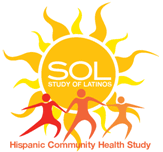| Title | Hearing Aid Prevalence and Factors Related to Use Among Older Adults From the Hispanic Community Health Study/Study of Latinos. |
| Publication Type | Publication |
| Year | 2019 |
| Authors | Arnold ML, Hyer K, Small BJ, Chisolm T, Saunders GH, McEvoy CL, Lee DJ, Dhar S, Bainbridge KE |
| Journal | JAMA Otolaryngol Head Neck Surg |
| Volume | 145 |
| Issue | 6 |
| Pagination | 501-508 |
| Date Published | 2019 Jun 01 |
| ISSN | 2168-619X |
| Keywords | Aged, Aged, 80 and over, Cross-Sectional Studies, Female, Hearing Aids, Hearing Loss, Hispanic or Latino, Humans, Male, Odds Ratio, Prevalence, Risk Factors, United States |
| Abstract | IMPORTANCE: Hearing loss is highly prevalent in the rapidly growing and aging Hispanic/Latino population in the United States. However, little is known or understood about hearing aid use among US adults from Hispanic/Latino backgrounds.OBJECTIVE: To describe hearing aid prevalence and factors associated with hearing aid use among US adults of Hispanic/Latino backgrounds.DESIGN, SETTING, AND PARTICIPANTS: Cross-sectional data were collected between 2008 and 2011 from 4 field centers (Bronx, New York; Chicago, Illinois; Miami, Florida; and San Diego, California) as part of the multisite Hispanic Community Health Study/Study of Latinos. Included individuals were adults aged 45 to 76 years with hearing loss (pure-tone average ≥25 dB HL) from randomly selected households in the 4 field centers and were from self-reported Hispanic/Latino backgrounds, including Central American, Cuban, Dominican, Mexican, Puerto Rican, South American, and mixed or other backgrounds. Analysis, including age- and background-weighted prevalence estimates and multivariate logistic regression using survey methodology, was conducted from 2017 to 2018.MAIN OUTCOMES AND MEASURES: The primary outcome of interest was self-reported hearing aid use. The a priori hypothesis was that hearing aid prevalence estimates among included Hispanic/Latino adults would be less than recently published estimates of the general US population, and that poorer hearing, higher perceived need, older age, and higher acculturation would be associated with hearing aid use.RESULTS: Of 1898 individuals with hearing loss, 1064 (56.1%) were men, and the mean (SE) age was 60.3 (0.3) years. A total of 87 (4.6%) included individuals reported hearing aid use. Increased odds of self-reported use was associated with poorer measured hearing (odds ratio [OR], 1.06; 95% CI, 1.03-1.09), higher Hearing Handicap Inventory-Screening scores (OR, 1.06; 95% CI, 1.03-1.08), access to health insurance coverage (OR, 2.30; 95% CI, 1.20-4.37), and place of residence (OR, 2.42; 95% CI, 1.17-5.02) in an adjusted logistic regression model.CONCLUSIONS AND RELEVANCE: Findings revealed underuse of hearing aids among adults from Hispanic/Latino backgrounds. A primary factor related to use was lack of health insurance, which suggests that access influenced hearing aid use. Changes to policy and clinical service provision are needed to increase hearing aid use among aging Hispanic/Latino adults in the United States. |
| DOI | 10.1001/jamaoto.2019.0433 |
| Alternate Journal | JAMA Otolaryngol Head Neck Surg |
| PubMed ID | 30998816 |
| PubMed Central ID | PMC6583684 |
| Grant List | N01HC65233 / HL / NHLBI NIH HHS / United States N01HC65234 / HL / NHLBI NIH HHS / United States N01HC65235 / HL / NHLBI NIH HHS / United States N01HC65236 / HL / NHLBI NIH HHS / United States N01HC65237 / HL / NHLBI NIH HHS / United States |
Hearing Aid Prevalence and Factors Related to Use Among Older Adults From the Hispanic Community Health Study/Study of Latinos.
MS#:
0667
ECI:
Yes
Manuscript Affiliation:
NIH Institution - NIDCD - National Institute on Deafness and Other Communication Disorders
Manuscript Status:
Published
